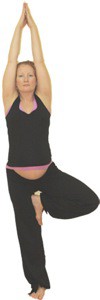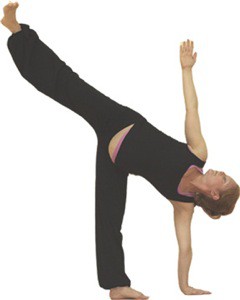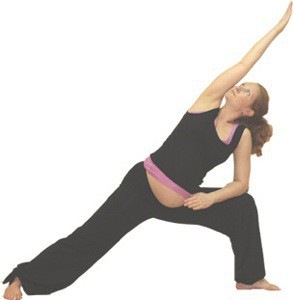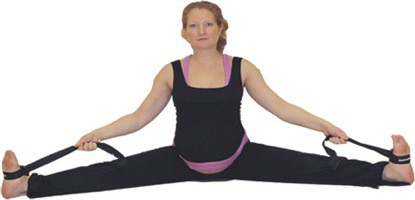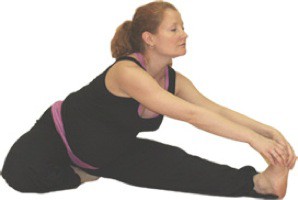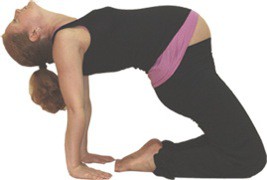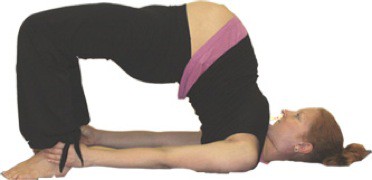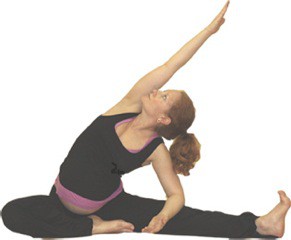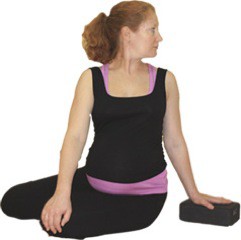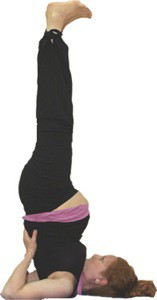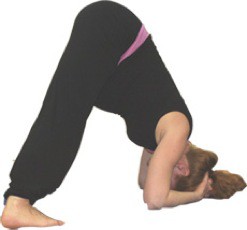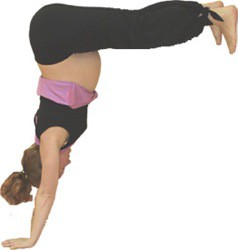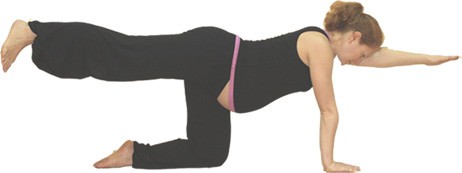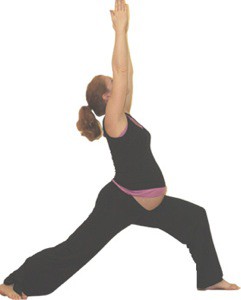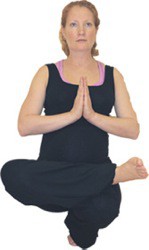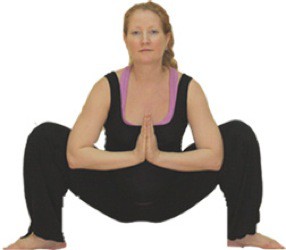There are times in a life of a woman, when she has to fulfill the mission entrusted to her by nature. And as a conscious being, she has to perform it with utmost responsibility.
A future mother, who is eager to start (resume, or continue) yoga practice, faces a lot of questions. Which term is suitable for practice? What asanas should be included or excluded? Is it possible to do pranayama, and if yes, then how? What should I do if I face some problems, connected with pregnancy? Can I practice on my own? And many others.
It is quite difficult to find answers to these questions that would equally work for everybody in all the situations. It is known that all asanas (even shavasana) have contraindications. Which means that a universally applicable complex that would consider all peculiarities and possible variants of a pregnancy, would be ineffective and would reduce the number of performed exercises.
On the other hand, there would be a suitable practice for any, even quite a difficult situation, though this practice does not necessarily have to include asanas.
Knowing the basic principles of practice, broadenes horizons for creative application of previously adopted skills and even mastering new ones.
Let’s outline them.
Comfort and steadiness. This principle dates back to Patanjali. It is just necessary to remember that the baby should also feel comfortable in the position of your body, and sometimes it tries to communicate it to you with the help of motion. With this principle in mind, you can perform even quite complicated and sometimes shocking postures.
Breathing control and its concurrence with movement. Losing breath signals tension, and tension contradicts with the first principle.
Regularity. Incidental practice, for example, of pranayama, will be at least useless.
Considering changes in the woman’s body. There is a whole list of them, which can be mentioned here. Practically, it means that some asanas might be worth dropping at later terms, and some worth including. For instance you can turn to special asanas considering the appearing problems or peculiarities, like varicosity of small pelvis and lower limbs, costiveness, malpresentation, pains in the small of the back and pubic symphysis, hyper- or hypotension, chest excursion limitation, weight gain, increase of circulating blood volume, edema, numbness, acid indigestion etc.
No general group classes during the first trimester. It may lead to sad consequences. It is necessary for the impregnated egg to stick to the uterine cavity and placenta to generate. No abdomen manipulations! It means you have to put off kapalabhati, bhastrika, uddiyana bandha, agnisara dhauti and nauli for this time. In addition to this, there should be no impact on abdomen muscles during the first three months. The best practice for this period is outdoor rest and walks, moderate swimming, gentle pranayama without kumbhaka and meditation.
Balance your practice. Considering the compensation principle, it is possible to include asanas from all basic groups (see below).
Adaptation of asanas. Obviously, the full variant of some asanas becomes impossible to perform. It usually applies to deep twists with bending, strong bends and positions which presuppose lying on the stomach. In these cases we can use light versions. For example, in parivrita trikonasana the twist is supported by a wall, with the body held vertically. Shalabhasana and dhanurasana are replaced with similar postures on the knees. There are many ways asanas ca be adapted. It can be a separate big topic.
Contraindications.
This point is very important. All restrictions should be discovered. If they are not, it is worth seeing a doctor, preferably the one practicing yoga, or an experienced instructor of a specialized group.
Psychological comfort. It is desirable to set your mood for practice, balance your mind, set aside all negative emotions and thoughts, if possible. Pranayama, as well as concentration and meditation techniques are invaluable tools for this.
Injury prevention. Ovay and placenta generate relaxin, a hormone that softens bands and sinews, which means that in stretching postures (e.g. splits) it is necessary to restrict the limit load. The same hormone destabilizes pubic symphysis, that can restrict postures with asymmetric leg position. A warm-up sukshma vyayama is very welcome and helpful to prepare the joints and muscles for the work-out in asanas.
Preparation for delivery. Delivery is a key event in the life of every person. According to S. Grof and his theory of perinatal matrices, the whole child’s life may depend on how it happens. Preparation for the delivery includes breathing, relaxation during gripping pains, information support from yoga practitioners who have already given birth and psychological mindset (pain acceptance skill).
Here are basic groups of asanas, tentatively separated into classes. Let’s regard their benefit and their influence on the organism of a future mother:
Good for your posture, back and abdomen muscles and vitality.
They include a wide range of asanas: virabhadrasana, trikonasana, prasarita padottanasana, parshvokonasana, balance asanas (vrikshasana, ardhachandrasana, utthita hasta padangushthasana) and many more. Involving adaptation principle (see above) you can do almost any asana.
Traction bends. They release tension and pain in the lumbus and edge bone area, strengthen the back, prevent varicosity, improve breathing and relaxation, taking off tension from deep muscle groups.
It is worth mentioning asanas like paschimottanasana, upavishta konasana, janu shirshasana, tiriang mukhaekapadu paschimottanasana and others.
Back bends open a chest and stretch the diaphragm, strengthen abdomen and influence kidneys, improving water-salt metabolism, and also enhance the spine’s elasticity.
Ushtrasana, kandharasana, urdhva dhanurasana (with straight legs together, i.e. ‘a long bridge’), standing backward bends are possible options. It is necessary to remember that bending stretches the lumbus and properly opens the chest.
Twists are good for stretching and toning up the spine.
Among them are parivritta janu shirshasana, bharadvajrasana and other sitting, lying or standing twists.
Upside-down asanas stimulate endocrine system, which is crucial for a normal pregnancy. They also release the sense of heaviness and restore venous outflow in the pelvic area (as the womb is connected to the pelvis), as well as in lower limbs, allow the fetus to take the right position, prevent costiveness and edema, and also stimulate endorphin generation (raise your mood).
The best period for practice is from the 14th week to the 33rd, as there can be breathing difficulties on later terms because of the womb’s pressure on the diaphragm.
We can use viparita karani mudra, sarvangasana, halasana (with legs spread wide, and supported by a chair or a wall), shirshasana (feet on the floor), handstands and various light versions of the aforementioned postures.
Power asanas and balance handstands let you strengthen the muscles of pectoral girdle, preparing the mother for the after-birth childcare, because your baby basically spends the first year of its life in your arms. Consequently it is necessary to strengthen inter-scapular area (trapezius and rhomboid muscles), that would bear most of the load to prevent slouching.
Active involvement of pectoral muscles will have positive effect on future lactation as a result of enhancing blood flow, nourishing lacteal gland, and prevent possible plugged ducts during the period of breastfeeding.
Subject to your previous training you can try variants of asanas, from simple kneel push-ups in chaturanga dandasana, to more advanced variants, like bakasana, bhujapindasana, titibhasana, ekapada kaudinyasana, pincha mayurasana and handstands supported by a wall.
It is worth pointing out special groups of asanas, which, if done regularly, ideally compensate the excessive loads of pregnancy. They are meant first of all to strengthen the muscles of the back, abdomen and pelvic bottom, i.e. the muscle layers that hold the increasing weight load.
“Cat” postures (marjariasana) with raising arms and legs, have good strengthening effect on the back, as well as any sitting or standing forward bends, with or without support.
Robust load on abdomen muscles is not advisable, as it may increase the abdominal pressure. However, light versions are allowed. For example, short fixation in prone position (urdhva chaturanga dandasana), raising each leg lying on the back (ardha halasana) and standing backward bends strengthen this area and prevent diastasis of abdominal rectus muscle white line rupture after delivery. They also prepare the muscles for active push period.
Muscles of pelvic floor require every-day care and attention. Their elasticity and resilience make delivery easier, preventing ruptures. Hunker postures as well as regular practice of mulabandha and ashvinya-mudra (recurrent contraction of anus muscle).
Relaxing asanas include shishankasana (which is also good to stretch the spine) and shavasana (that is normally done on the side).
Pranayama - one of the most important practices during pregnancy and the main practice during delivery. It ensures proper oxygen digestion and waste ejection, eliminates dullness, weariness and drowsiness, stabilizes the nervous system, preserves and sometimes even increases lungs vital capacity.
Kumbhaka should be excluded from all pranayama practices, though experienced practitioners can do small open breath-holdings to enhance venous return and increase stroke volume.
Full yoga breathing, ujjayi, surya Bhedana, Nadi Shodhana, shitali, shitkari, bramari, viloma and sattana pranayama have wonderful effect on your well-being.
There is also special breathing technique used during the delivery. It helps the womb to open up and decreases pains.
All in all, yoga practice during pregnancy is permitted and recommended. Choose your variant of practice based on the principles explained above and your long-expected baby will gratify you with his or her ruddy health, stable psyche and his or her first asana, done unconsciously with “surprising” ease and comfort :)



